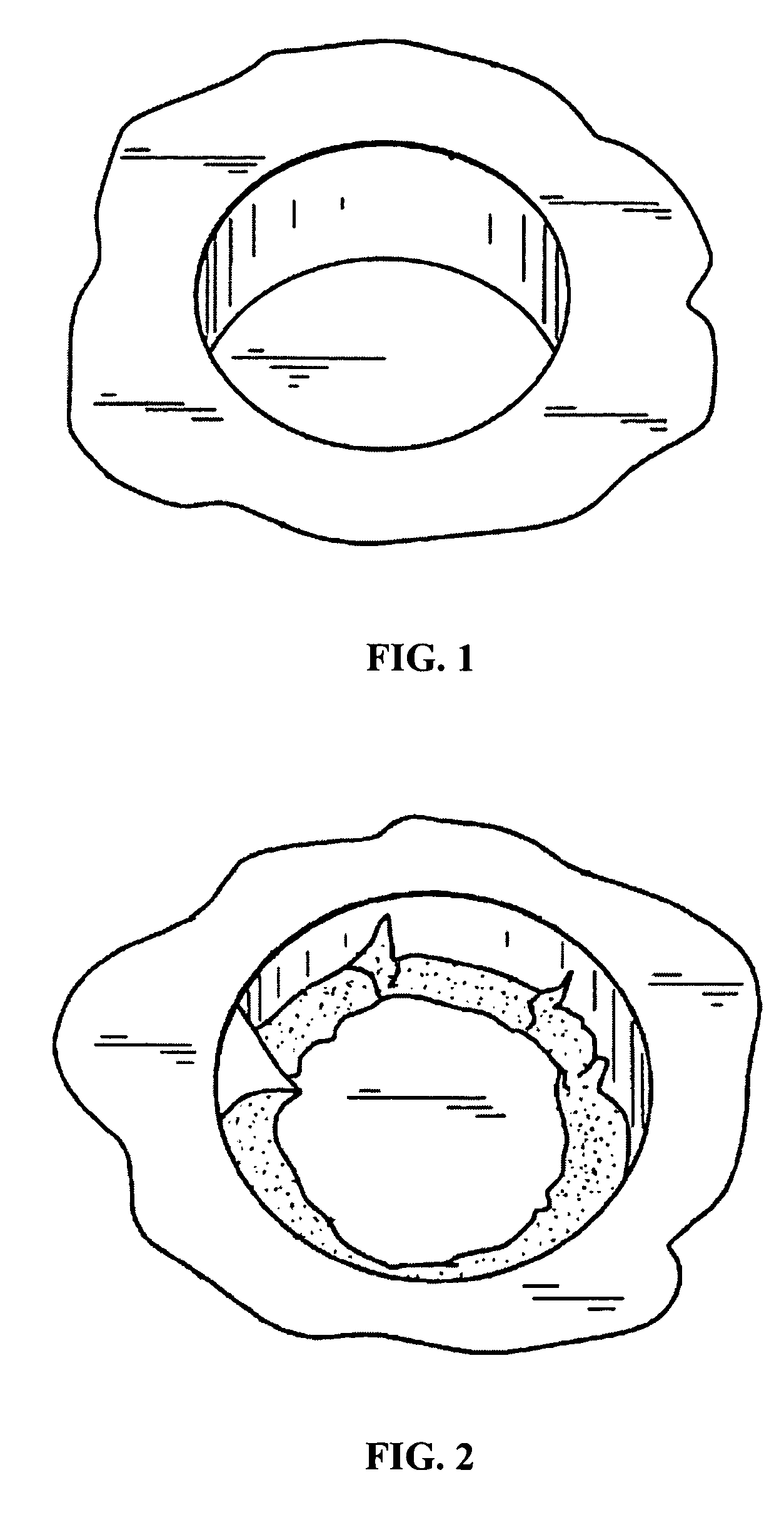Material used to combat thermal expansion related defects in the metal casting process
a technology of thermal expansion and material, applied in the field of metal founding, can solve the problems of reducing veining with limited success, nakayama et al. failing to teach using a lithia-containing compound such as -spodumene as an anti-veining agent in sand-based foundry molding and core mixture, and the product is very costly for the manufacturer of the core, so as to improve the quality of casting and reduce thermal expansion defects
- Summary
- Abstract
- Description
- Claims
- Application Information
AI Technical Summary
Benefits of technology
Problems solved by technology
Method used
Image
Examples
Embodiment Construction
[0016]An additive to foundry sand molding and core aggregates is used to produce sand cores and molds. The additive produces a sand-based foundry molding and core aggregate which resists the formation of some of the defects commonly associated with the production of castings produced by silica sand-based molding and core aggregates. In particular, the additive improves the quality of castings by reducing thermal expansion defects, i.e. veining, in iron, steel and non-ferrous castings.
[0017]The additive of the present invention may be used with conventional foundry silica sand molding and core aggregates used in the manufacture of sand-based molds and cores. Such mold and core aggregates are usually made from silica sand, with the sand grains being bound together with a mechanical or chemical means. Typically, the mold or core mixture may comprise between about 80% to about 99% of silica sand, and about 0.5% to about 10% of a binder. The binder used may be any of numerous conventiona...
PUM
| Property | Measurement | Unit |
|---|---|---|
| pouring temperatures | aaaaa | aaaaa |
| height | aaaaa | aaaaa |
| diameter | aaaaa | aaaaa |
Abstract
Description
Claims
Application Information
 Login to View More
Login to View More - R&D
- Intellectual Property
- Life Sciences
- Materials
- Tech Scout
- Unparalleled Data Quality
- Higher Quality Content
- 60% Fewer Hallucinations
Browse by: Latest US Patents, China's latest patents, Technical Efficacy Thesaurus, Application Domain, Technology Topic, Popular Technical Reports.
© 2025 PatSnap. All rights reserved.Legal|Privacy policy|Modern Slavery Act Transparency Statement|Sitemap|About US| Contact US: help@patsnap.com


